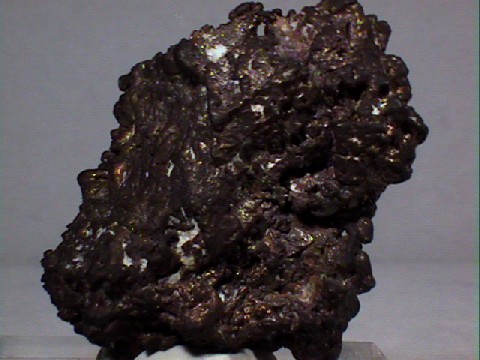 THE MINERAL DOMEYKITE
THE MINERAL DOMEYKITE
- Chemistry: Cu3As, Copper Arsenide
- Class: Sulfides
- Subclass: Arsenides
- Uses: Mineral specimens, ornamental stone and as a minor ore of copper.
Specimens
Domeykite can be used in many similar ways to those of
PHYSICAL CHARACTERISTICS:
- Color is off-white, yellow-brown, copper-brown to steel-gray.
- Luster is metallic.
- Transparency: Crystals are opaque.
- Crystal System: Isometric, possibly tetragonal; bar 4 2/m.
- Crystal Habits include botryoidal, reniform and massive specimens.
- Cleavage: Absent.
- Fracture: Hackly.
- Hardness is 3 - 3.5
- Specific Gravity is variable from 7.2 to 8.1 but averages around 7.7 (very heavy even for metallic minerals).
- Streak is gray black.
- Other Characteristics: Specimens will tarnish easily and cutting or powdering specimens will yield a garlic odor (arsenic).
- Associated Minerals include calcite, nickeline, copper and other copper ore minerals.
- Notable Occurrences include the type locality of Algodones Mine, Coquimbo, Chile and also the Mohawk Mine, Keweenaw County, Michigan, USA and the copper mines of Ontario, Canada.
- Best Field Indicators are color, crystal habit, streak, density and luster.



